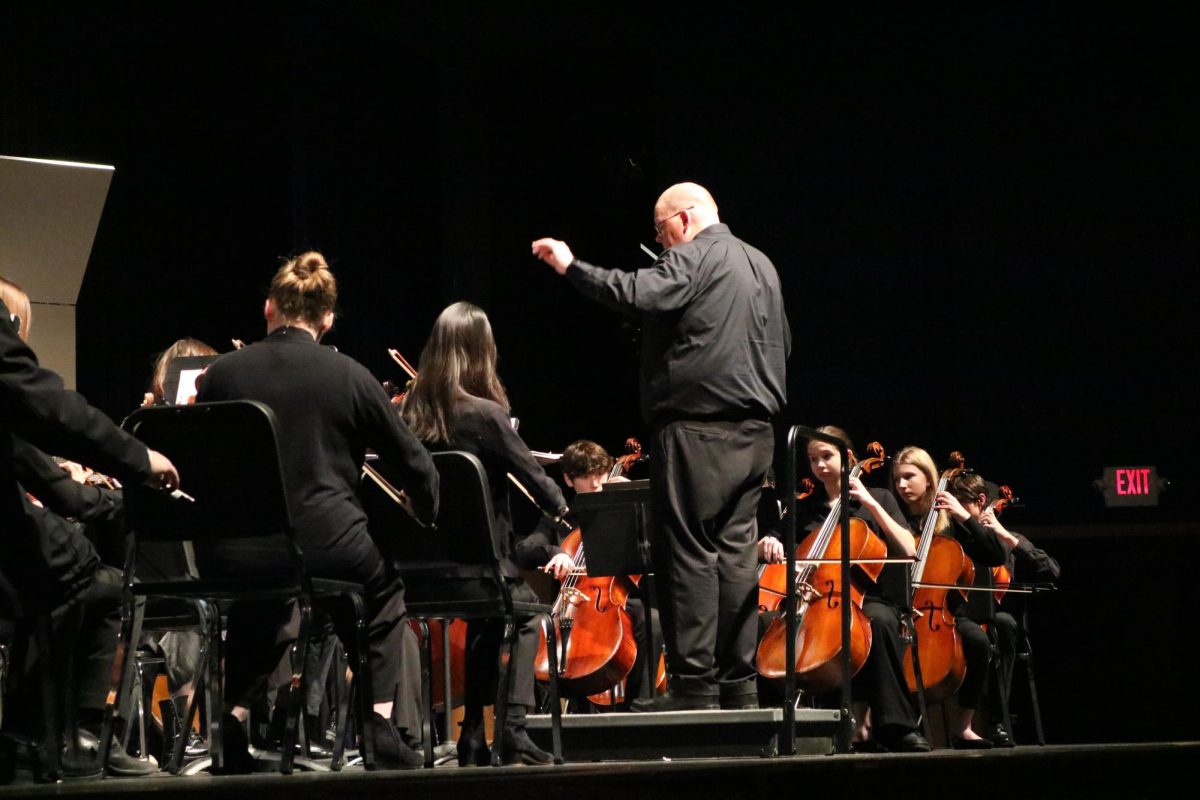Almost every student has experienced it: that rush of dread in the pit of the stomach, those ever-increasing feelings of hopelessness, that overwhelming scream-into-the pillow-sense. The feeling that it’s just not possible to do everything that needs to be done. Almost every student has experienced stress.
As common as it is in everyday life, stress is easy to ignore. But, recent data makes it clear that stress has become too prominent of a problem to ignore any longer.
According to a recent survey conducted by the American Psychological Association, nearly half of all teenagers said that they worried more this year than last year and experienced difficulty sleeping as a result of stress.
Psychologists are now citing stress as a top health concern for teenagers aged 13-17 and saying that this stress could have serious long-term health effects if not managed properly.
The reports start to show that the simple problem of stress is becoming serious and students are becoming too stressed.
Stress is the body’s response to any kind of pressure or demand put on a person. When the body experiences stress, the nervous system releases hormones like adrenaline and cortisol to prepare the body for the upcoming stressors. This is called the “fight or flight†response; your body prepares to either counter the stressor or run away from it.
Stress has come to have only a negative connotation, but not all stress is bad.
Having some stress stimulates the body and allows people to become motivated and perform at a higher level. After a certain point, however, stress can become harmful.
“Stress can become a problem when the amount of stress we feel goes beyond our ability to handle it,†Health teacher Melissa Hobbick said.
Stress becomes negative when the body cannot feel the rewards from the body’s hard work.
“When stress goes from pushing you to making you feel like no matter how hard you’re working it’s not good enough or making you feel like there’s just too much going on, it becomes something negative,†Psychologist Teresa Flynn said.
This negative stress is what can lead to problems ranging from minor headaches to full-blown depression and anxiety disorders. The teenage years by nature contain many stressors that are somewhat unavoidable.
“There are lots of changes happening during the teen years and any type of change is a source of stress,†Flynn said. “Most kids are having their first experiences with drugs, alcohol, and relationships and that can put a lot of stress on students.â€
Counselor Alice Morrison agreed that the teenage years alone are a constant source of stress.
“It’s a transitional time when you’re moving away from the relationship with your parents and closer toward the relationship with your friends,†Morrison said. “Even the stressors that your friends face can affect you and add to your stress.â€
The attitude of friends does indeed play a large role in determining stress levels. If a student’s friends are stressed out, a stressful climate surrounding that student is created, which reflects immediately back on their stress levels, even if they themselves don’t have much cause for stress.
The technologies of the modern world make this an even more prevalent factor in stress. Students are constantly connected to each other whether it’s through Facebook, texting, or some other portal for social interaction.
Though many students may think of their friends as a source of stress relief, this is not always so. The constant exposure to some sort of stimulation forces students to be “on†and thinking at all times.
“Nowadays teenagers experience constant stimulation, and I think that’s exhausting for them,†Flynn said. “There’s absolutely no time when they’re not connected to their friends in some way, and so they have no time to relax.â€
This makes some aspects of student life inherently more stressful than ever. Students can find themselves overwhelmed and stressed from simply keeping up with the demands of modern society.
Some students feel stress from more than just the social world.
“Keeping up with the schoolwork is the main source of my stress,†sophomore Jocelyn Cooper said.
Physics teacher Gabe De la Paz acknowledges that CHS schoolwork does have the potential to be a little too much.
“CHS has a lot of really good classes, and if you take a lot of those classes at one time, you could end up with a lot of work,†De la Paz said.
The trouble comes when students feel that they are obliged to take on this workload. CHS, being such a high performing school, naturally creates a sort of pressure for students to do everything they can and be good at all that they do.
“There’s definitely pressure there,†Hobbick said. “There’s that idea that we’re the best of the best, and I think that a lot of people put that pressure on themselves. Whether it’s self induced or pressures put on them from the outside world, I think there are a lot of stressed out kids at this school.â€
It’s easy to point out all the uncontrollable aspects of the lives of students that are to blame for high stress levels, but, often, students put added stress on themselves. Whether the idea was given to them by an outside source or assumed by the student, some students believe that they must overextend themselves in order to be successful.
“Many times when you ask teenagers, they’ll say they choose to take that level of classes, or they choose to be involved in all of those activities,†Morrison said. “Often, their parents are telling them to back off, but they don’t want to.â€
Junior Jaclyn Poe agrees that stress can be self-imposed.
“A lot of times students can make themselves stressed out by choosing to participate in all of these sports and activities,†Poe said.
Almost always, excessive student stress stems from having multiple stressors at one time. It’s often the combination of schoolwork, clubs, sports, and other obligations that proves to be too much.
Poe feels that all of her extracurriculars add to her stress.
“At one point, I’ll have a Student Government event I need to be at, physical therapy, and sports events and then to balance that with schoolwork is pretty stressful,†Poe said.
Students could tend to overextend themselves for several reasons. Sometimes, students choose to participate in so many activities because they’re simply interested in trying many things. This kind of participation in many activities isn’t always too much for students.
“I think if students are participating in activities they genuinely like to do, then it’s not always that stressful for them,†De la Paz said. “It’s when students participate in activities because they’re worried about their transcripts when things get stressful.â€
Freshmen A. J. Joseph agrees that extracurriculars have the ability to be both positive and negative.
“If you enjoy doing an extracurricular, it gives you a chance to get away from your stress, but if you don’t like doing it, then it’s just an activity that gives you less time to do your work,†Joseph said.
The kind of student thinking that students have to perform well in everything they do and be involved in as many things as possible in order to be successful works in detriment to their mental health.
If students put the pressure of their entire futures on everything that they do, the stress can become too much to handle.
“Sometimes schools unknowingly send the message that students must do well to have good lives,†Flynn said.
Morrison agrees that that’s exactly the type of message students shouldn’t be getting.
“There’s always that thinking of if I let this go, then my grade will drop,†Morrison said. “If my grade drops, then I won’t get into college. If I don’t get into the college that I want, then I won’t have the career that I want, and that’s just not how life really is.â€
Some of what fosters this inaccurate way of thinking is the competition between students within school.
“Students are definitely competitive,†Poe said. “That competition makes me work hard to see if I can do better than other people.â€
Sophomore Shuyang Li acknowledges that there is competition between students, but doesn’t feel that it’s much of a stressor.
“There’s natural competition between students to do well,†Li said. “That adds to stress, but not on the scale that other things like schoolwork do.â€
Some teachers, however, feel differently about the effects the competitiveness between students has on the student body.
“Because Clayton is such a small school, there’s a lot of competition,†Hobbick said. “I think that definitely adds to the stress students feel.â€
De la Paz agrees that competition isn’t always good for students.
“School is a lot more competitive now than it used to be,†De la Paz said. “It’s basically just become one big competition to get into college.â€
Though most everyone agrees that students are stressed, it’s hard to say if CHS students specifically are too stressed. Some see the competition and high expectations for students at Clayton as a breeding ground for overstressed students.
“In Clayton, you see a lot of people that are very accomplished, and that puts pressure on everyone to be perfect,†Flynn said.
Most students agree that the stress level at Clayton is unusually high.
“I think CHS is more stressful than other schools just because of the workload and drama,†Cooper said.
Others say that a high stress level is a characteristic of most high schools across the nation.
“I’d say that CHS is pretty average in comparison with other schools,†Morrison said. “Students at other schools may not have the same stress, but I think they have just as much.â€
Whatever the case, it’s clear that stress is a prominent factor in students’ lives. The best cure for a bad case of stress lies in one word: balance. Ultimately, it is up to the students to choose their priorities and keep their work proportional to their play.
“I would never discount the impact balance has on a student’s life,†Morrison said. “It’s key to maintaining a healthy lifestyle.â€






